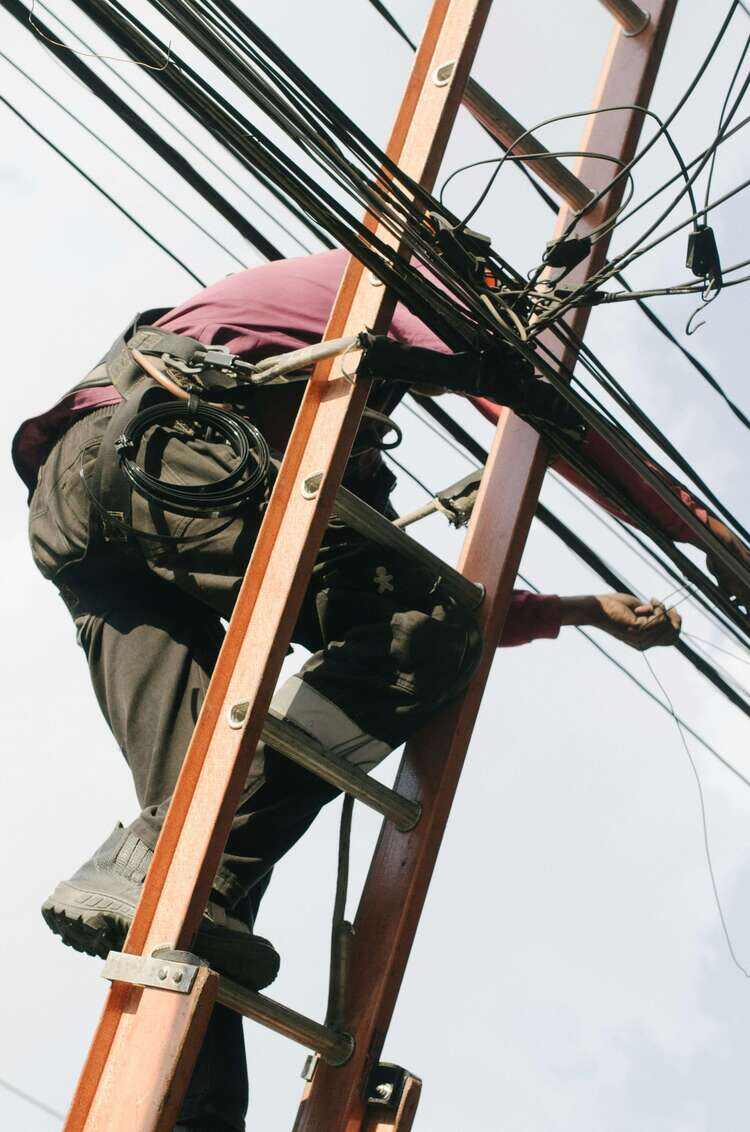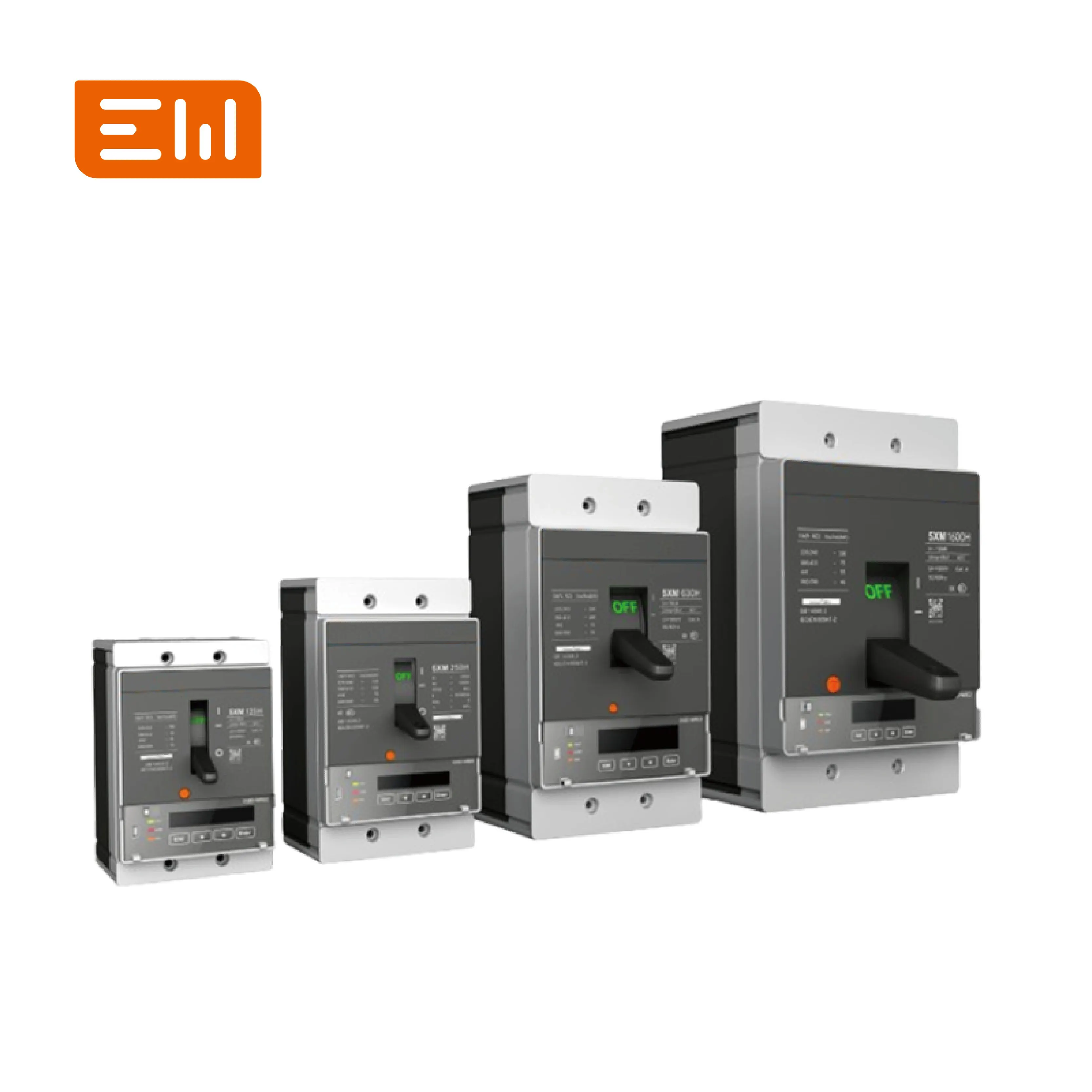Circuit Breakers: Little Ones, Big Ones, and How to Stay Safe
Ever wonder what protects your home or workplace from electrical problems? It's often a circuit breaker! These essential safety devices come in many sizes, from the small ones in your house (like MCBs and 15-amp breakers) to large ones in industrial settings (like ACBs). This guide explains the different types, how they work, how to replace one safely, and crucial lockout procedures to prevent accidents. Understanding breakers helps keep your power reliable and safe.
First, let's look at miniature circuit breakers, or MCBs. These are like little safety guards found in most homes. They're small (that's why they're called "miniature"!) and watch over circuits that don't use a ton of power. Their main job is providing circuit protection by stopping problems like "overloads" (too much electricity trying to flow) or "short circuits" (when wires touch by mistake).
Why Use Miniature Circuit Breakers?
MCBs are great for homes because they work fast! If they sense an electrical problem, like too much power or a short circuit, they quickly turn off the electricity to that area. Think of it like a light switch that flips itself off to keep things safe. If it trips, you can usually just flip the switch back on!
Good Things About MCBs
MCBs are smart about finding problems. They have a switch you can easily see, so you know if the power is on or off for that circuit.
They are also stronger than old glass fuses. You can reset an MCB many times, and it keeps working. This means they last a long time.
Different Kinds of MCBs
MCBs come in different types for different jobs. Some protect one wire (single-pole) for things like lights. Others protect two wires (double-pole) for big appliances like stoves. Big factories might use ones that protect three wires (three-pole). Knowing the type helps pick the right one. Sometimes, the way they trip involves a tiny change in a magnetic field inside them.
The 15 Amp Circuit Breaker
A very common MCB is the 15 amp breaker. "Amp" is like a measure of how much electricity can flow. You'll probably see lots of these in your home's electrical box (called a breaker panel). They are just right for most lights and wall outlets.
Mixing Breakers in Your Panel
Your home might have different amp breakers. A 15 amp is common, but you might see a 20 amp for a kitchen or a bigger one for an air conditioner. Using the right size breaker for each job keeps your home safe.
Air Circuit Breakers (ACBs)
Now for the bigger safety guards: air circuit breakers, or ACBs. These are used where lots of power is needed, like factories or big buildings. Even though they are often in "low voltage" systems (like 480 or 600 volts), they handle huge amounts of electrical current – much more than home breakers.
How Do Air Circuit Breakers Work?
When an ACB stops the electricity flow, it creates a big spark, called an arc. ACBs are designed to handle this safely.
They cleverly use air to blow out this spark. Special parts like arc chutes (sometimes referred to as an air chute) guide the air, and sometimes blowout coils use magnetism (a magnetic field effect) to help push the arc away and put it out quickly. They are built tough for places that use a lot of power.
Cool Things About Air Circuit Breakers
ACBs can often be adjusted to turn off at just the right level of power for a specific machine. They usually have a handle to turn them on or off by hand if needed. Because they are strong, they work well in busy factories.
Where Are ACBs Used?
Besides factories, ACBs are important for the power grid – the network that brings electricity everywhere. You might find them in substations, helping control the flow of power and quickly stop problems so they don't cause big blackouts.
Keeping ACBs Working
Like any important machine, ACBs need check-ups. Checking them regularly makes sure they are clean, working right, and ready to protect the electrical system for a long time.
Other Types of Breakers
Besides MCBs and ACBs, there are other types too. For even high voltage needs, sometimes older designs like oil circuit breakers were used, which put out arcs using special oil instead of air. For protecting equipment that uses thousands of volts, special Medium Voltage Circuit Breakers are needed.
Mini Circuit Breakers (Compact Breakers)
These sound like MCBs, but they are often even smaller! You might find these tiny breakers inside specific machines or gadgets, protecting smaller, sensitive parts.
Why Use Compact Breakers?
These little guys are perfect for protecting small circuits in things like computers, TVs, or even cars. They are small and good at stopping tiny power surges that could hurt delicate electronics.
Good Things About Compact Breakers
Their small size is handy when there isn't much space. They give very exact protection, which is important for electronics. They are usually easy to put in.
Where Are Compact Breakers Used?
You might find them inside your computer or TV. Cars use them too, to protect lights and radios. Factories might use them in control panels for machines.
Picking the Right Compact Breaker
To choose the right one, you need to know how much electricity (voltage and current) the device uses. Getting the right match means it will be protected correctly. If you're not sure, ask an expert!
How to Replace a Circuit Breaker

Sometimes, old breakers stop working right and need to be replaced. Changing one isn't super hard, but you MUST be safe.
Steps to Replace a Circuit Breaker
- Turn Off ALL Power: This is most important! Find the main switch for your whole house in the breaker panel and turn it OFF before touching any wires.
- Take Off the Cover: Unscrew the front cover of the breaker panel so you can see the breakers inside.
- Find the Bad Breaker: Figure out which breaker needs replacing. It might be the one that keeps tripping or looks burnt.
- Take Out the Old Breaker: Loosen the screw holding the wire. Gently pull or wiggle the old breaker out of its spot.
- Put In the New Breaker: Put the wire into the new breaker and tighten the screw. Snap or push the new breaker firmly into the empty spot.
- Put the Cover Back On: Screw the panel cover back on.
- Turn the Main Power Back On: Flip the main switch back on. Check if the new breaker works.
*(Remember: Be super careful!)*
Staying Safe While Replacing
Electricity can be dangerous! Use tools with rubber handles (insulated). Wear shoes with rubber soles. Don't stand in water. If you feel nervous or unsure, STOP and call a professional electrician. It's better to be safe!
What If the New Breaker Trips?
If the new breaker turns off right away, there might be a problem with the wiring in your house (like a short circuit) or too many things plugged in. Check the wires connected to the breaker. Make sure you used the right amp size breaker. If it keeps tripping, you need an electrician to find the problem.
Tools You Might Need
A screwdriver, a voltage tester (to make SURE the power is off), and maybe wire strippers (to trim wires) are helpful. A flashlight is good too.
Circuit Breaker Lockout: Extra Safety!
When someone is working on electrical wires, it's super important that nobody turns the power back on by accident. That's where using a circuit breaker lockout device helps.
How Do Lockout Devices Work?
A circuit breaker lockout device is like a special clamp or cover that fits over the breaker switch and holds it in the "off" position. You put a padlock on it so only the person working has the key. This stops anyone from accidentally flipping the switch on and hurting the worker.
Types of Lockout Devices
There are different kinds:
- Snap-on ones: Easy for simple breakers.
- Clamp-on ones: Can fit many types, often using a screw to hold tight.
- Special ones: Made for breakers that have bars connecting multiple switches.
You need the right type for the breaker you have.
Why Lockout/Tagout (LOTO) is Important
Using these locks is part of a safety plan called Lockout/Tagout (LOTO). You lock the power off and put a tag on it saying "Do Not Turn On! Someone is Working!" This is very important to keep workers safe.
Using Lockouts at Work
Jobsites must teach workers how to use lockout devices and follow the safety rules. Checking regularly makes sure everyone stays safe.
Frequently Asked Questions (FAQ)
Q: Can I replace a 15 amp breaker with a 20 amp breaker?
A: Generally, no. Breakers are sized to protect the wiring. Using a higher amp breaker than the wire is rated for can cause the wires to overheat and start a fire. Always replace a breaker with one of the same amperage rating unless an electrician confirms the wiring can handle more.
Q: Why does my circuit breaker keep tripping?
A: This usually happens for two reasons: 1) An overload - too many things plugged into the circuit, drawing too much power. 2) A short circuit - a problem with the wiring or an appliance. If it keeps tripping after you unplug things, call an electrician.
Q: Are circuit breakers better than fuses?
A: Yes, for most home uses. Breakers can be reset easily, while fuses must be replaced. Breakers often react faster to certain electrical problems.
Conclusion: Breakers Keep Us Safe
So, that's a look at different circuit breakers! From the small MCBs in your home to big ACBs in factories, they all provide important circuit protection. Understanding them helps keep electricity safe and working right. You can find many kinds of circuit breakers for different jobs. Always remember: safety first when working with electricity or breakers. If you're not sure, call an electrician!
Completing Your Power System: Understanding Transformers
Switchgear plays a vital role in controlling and protecting electrical circuits, but it often works hand-in-hand with transformers to manage voltage levels effectively. Whether you're designing a substation or managing an industrial power setup, understanding how to select the right transformer is just as crucial as choosing the correct switchgear. Our comprehensive guide covers everything you need to know about electric transformers.
Learn More: How to Choose the Right Electric Transformer
Table of Contents
- Circuit Breakers: Little Ones, Big Ones, and How to Stay Safe
- Why Use Miniature Circuit Breakers?
- The 15 Amp Circuit Breaker
- Air Circuit Breakers (ACBs)
- Other Types of Breakers
- Mini Circuit Breakers (Compact Breakers)
- How to Replace a Circuit Breaker
- Circuit Breaker Lockout: Extra Safety!
- Frequently Asked Questions (FAQ)
- Conclusion: Breakers Keep Us Safe
- Completing Your Power System: Understanding Transformers

